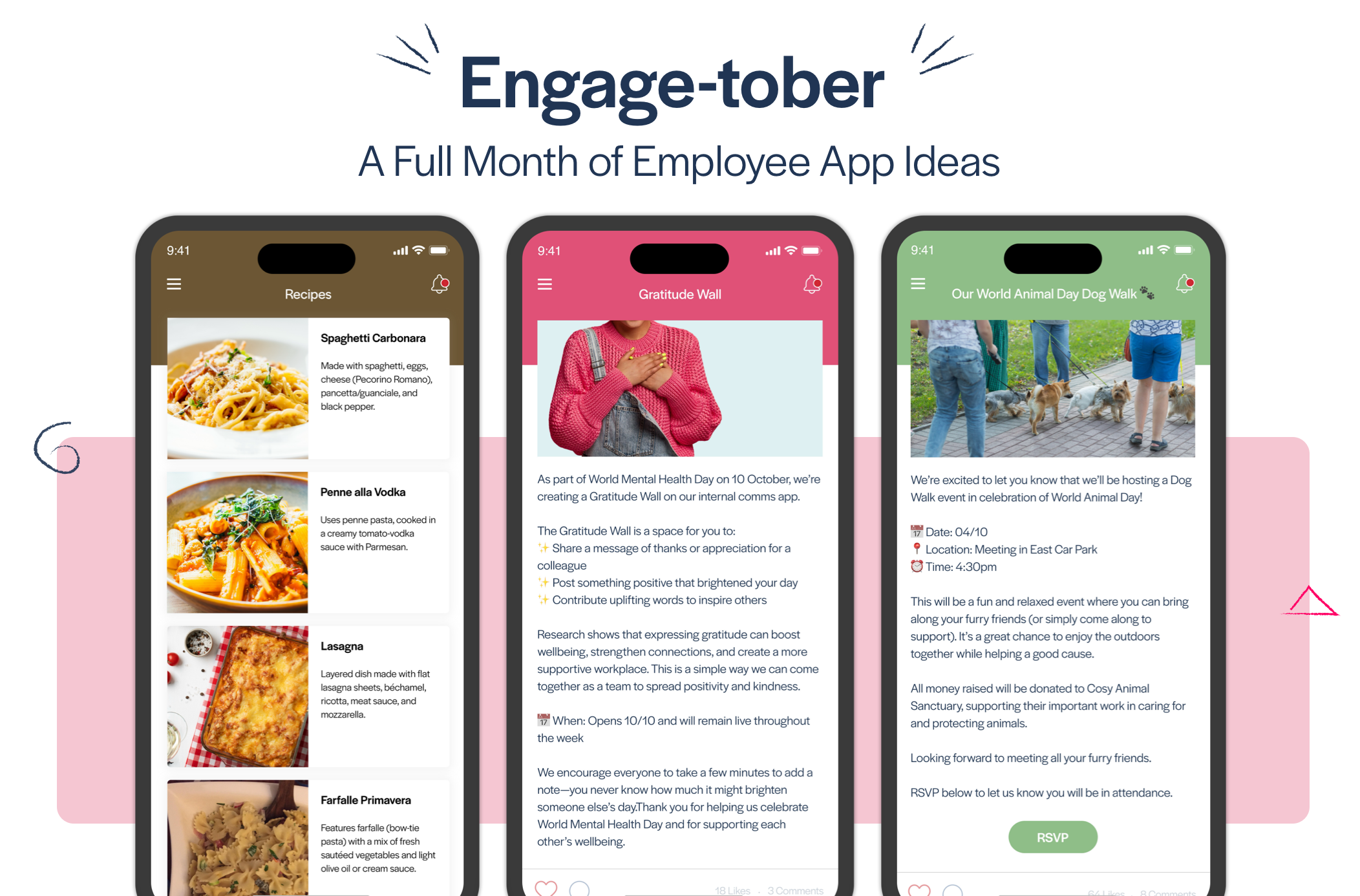
Blog
How to Create an Internal Communications Strategy, Quickly
It’s easier than you might think to develop a strategic plan on an accelerated timeline. Here’s how to create an effective internal communications strategy in six easy steps.

In today’s fast-paced business environment, it can often feel like launching a new initiative quickly must come at the expense of taking the proper time to develop a solid strategy behind it. And yet, it can seem that a well-developed strategy requires a great deal of time to get the campaign off the ground— time we rarely have to spare in business.
This seeming conundrum can be especially true when launching a new internal communications strategy. In many cases, there are consistent expectations for a fast roll-out, and very little time (let alone budget) to properly plan. But the truth is, you can create a smart and strategic internal communications plan on a fast timeline. It’s possible to design something that’s well-thought-out, that anticipates common obstacles or challenges, and that successfully meets the mark—and you can do it all in a relatively quick turnaround.

Why Should You Create an Internal Communications Strategy in the First Place?
There are so many benefits to drafting an internal communications strategy before launching a new campaign or initiative within your organisation. Consider the following:
- Developing such a strategy gives you the opportunity to truly think through the macro situation surrounding your business. This includes the nature and size of your company, competitive insights, industry hurdles, the typical communication styles and methods of your employees, and any potential objections or questions they are likely to have, among many other considerations.
- Having a strategy gives you a clear framework for your campaign, including important milestones and timing, contingency plans, budget (if any), success metrics, and more.
- Importantly, having a documented strategy gives you a concrete plan that you can present to key stakeholders throughout the development process and rollout, and it can demonstrate the progress and the value that your initiative has brought to the table.
What Should Be Included in an Internal Communications Strategy?
We’ve created a handy guide below with clear and concise steps toward building your own customised internal communications strategy. It’s comprehensive yet straightforward and easy to follow, guiding you through every question you should be asking yourself from start to finish.
With these six easy steps, you can develop a smart communications strategy for your organisation of any scope and size, all on a rapid timeline. You will be able to:
- Think through the most important questions related to building a solid strategic plan, all in a simple and sequential order.
- Identify any areas that could present obstacles—or even opportunities—for your communications plan, whether in developing it, launching it, or farther down the road.
- Anticipate the questions and needs that your employees will have, so you can be proactive about your response plan rather than reactive to their individual queries.
- Create benchmarks so you can measure and evaluate the progress of your strategy.

1. Company & Situation Analysis
In this robust section, you’ll think through the specifics of your business, including key stats and objective information about the company itself, along with more subjective details about the company’s current landscape and why you’re developing the strategy in the first place. While the latter part of this section can be high level, it sets the stage for the rest of the strategy to come. In fact, this background is critical to helping you articulate the reasons for the plan itself.
Building on the first part, here, you’ll dive deeper into the reasons behind the internal communications strategy at hand. What, specifically, is going on within the company that requires this particular response, or why do you anticipate needing it in the future? This is an excellent opportunity to think through the Strengths, Weaknesses, Opportunities, and Threats your business is facing (known as a SWOT analysis), so that you can not only identify areas that need improvement or attention, but also areas of strength that you can build upon.
2. Goals & Objectives
Once you’ve outlined your company background and conducted a detailed SWOT analysis about the specific opportunity or need for this strategy, it’s time to set realistic goals and objectives for what you hope to achieve.
Goals should be macro concepts that you wish to accomplish through this specific plan, such as “reducing employee turnover” or “increasing employee engagement.” You can have one primary goal, or even two or three—but it’s typical (and best practice) to keep this focused and not include any more than that.
Objectives are more concrete. They work to support your macro goals with more specific, actionable, and achievable numbers or percentages tied to them. For example, “increase adoption of an employee app by 10%” or “increase participation in career development workshops by 20%.” In this way, objectives can actually be measured within a defined period.
3. Primary Audiences
Maybe your communications plan is designed for the entire company, or maybe it’s only needed for a specific subset of your employees. Whether it’s an organisation-wide campaign, or a smaller project that will only impact a certain group (fully remote employees, for example), this is where you’ll detail important information about your audience(s), what tools they use, their communication styles and preferences, any challenges with reaching them in the past, etc.

4. Stakeholders
While it may seem obvious at the start, it’s critical to identify all the specific stakeholders who will be involved in your internal communication strategy. This can mean not only outlining the specific departments, such as human resources or operations, but also individuals within those teams who will be involved in the strategy—and how. This is a great place to think through what’s known as a RACI matrix or chart:
- Responsible – who, from each team, is responsible for completing specific milestones and approvals while developing the strategy? These are typically managers who will be involved in concrete steps along the way.
- Accountable – while not necessarily responsible for tactical steps, the accountable individuals have the final say over critical steps as well as the final campaign itself. These can be senior-level managers or others who have the ultimate ownership over the strategy’s success.
- Consulted – who will you need to meet with, in any capacity, to understand their specific perspective and/or expertise in a given area? These are departments or individuals who may be impacted by the strategy in some way but are not directly involved in building it.
- Informed – these are individuals of any station who will need to stay apprised of what’s going on, but do not necessarily need to complete or approve any milestones themselves. Who are these “need to know” individuals within your organisation?

5. Strategies & Tactics
This is where your plan begins to gel. Building on all the questions you’ve answered so far—the company background and situation analysis, the audiences who will be involved and impacted by the strategy, and the goals and objectives you wish to achieve—this is where you’re ready to outline the ideas (the strategies) and the specific steps (the tactics) that you will employ to make it happen.
6. Measurement & Evaluation
In this section, you’ll develop specific Key Performance Indicators (KPIs) that you can measure throughout the campaign to evaluate whether it was a success. Here, it can be helpful to build your KPIs or measurement points in a grid format, so that they correspond to your specified goals, objectives, strategies, and tactics. For example:
| Goal | Objective | Strategy | Tactic | KPI |
| Increase employee engagement | Drive 10% increase in the adoption of employee app | Encourage current employees to download the app in X month | Incentivise employee app downloads with a daily raffle | Measure new downloads by day during the campaign period as compared to usual adoption |
It can also be useful to add a sixth column for Results, which you can leave blank until you have concrete measurements to add. In this way, your plan is not only actionable, but also easy to see whether your specific tactics “ladder up” to the higher goals, or if more tactics are needed.
Ready to Get Started with Your Internal Communications Strategy—Fast?
The best part about following this step-by-step guide that you can think through complex business challenges and opportunities in a methodical fashion, quickly. You’ll work step by step to build a plan that’s actionable and measurable, gathering consensus from key stakeholders along the way, without wasting any time or money developing your strategic plan. So what are you waiting for? Get started on your strategy today!









